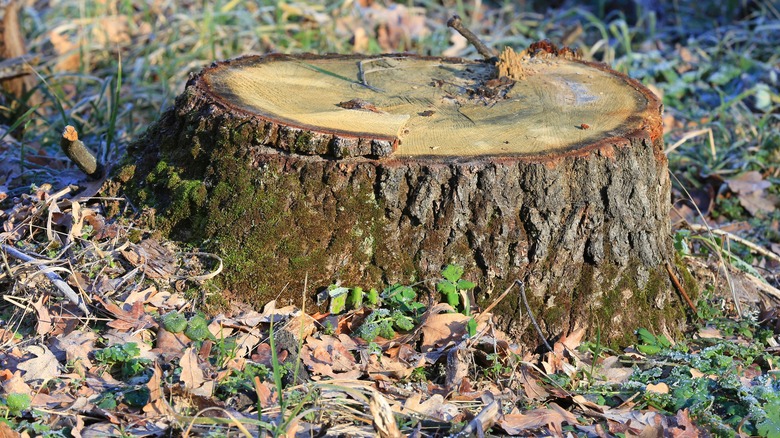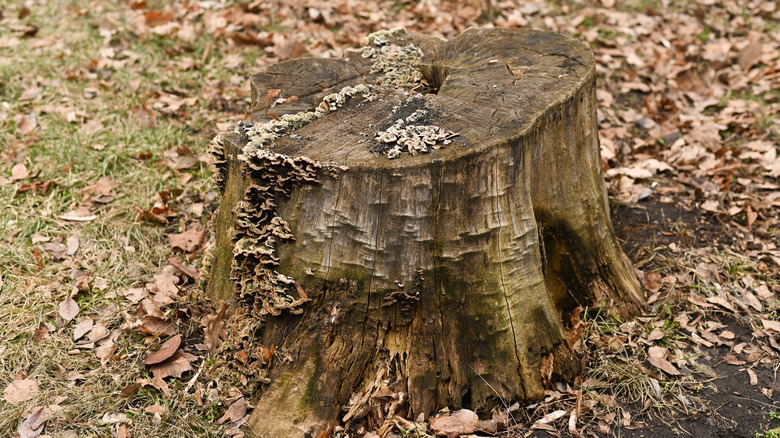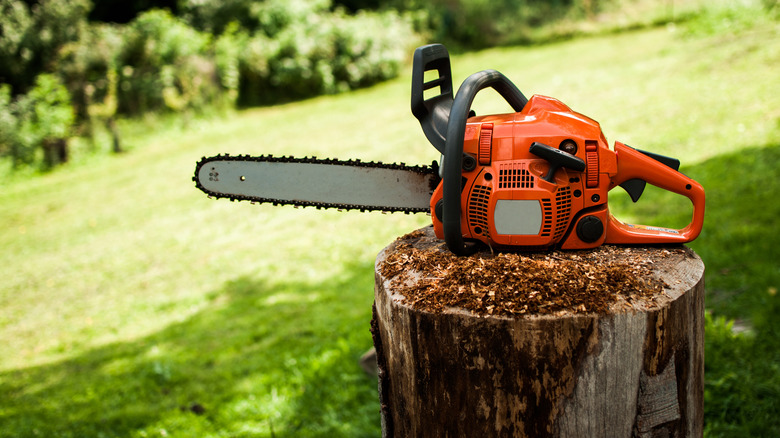How To Identify The Tree Stumps In Your Yard To Be Hollowed Out
There are plenty of reasons you might want to remove or repurpose an old tree stump. First, it doesn't add anything to the landscaping. It takes up valuable space where something else could be planted or arranged. Second, it's hard to perform maintenance around it, blocking lawnmowers and rakes. Plus, it can become a tripping hazard if it becomes overgrown with surrounding vegetation.
Many people would rather avoid removing a tree stump from their yard because the process is a headache. Professionals need to be called as you need heavy machinery to grind it down or rip it out, and the process can be dangerous. However, there is another option: You can repurpose it by hollowing it out. To see if the stump is a good candidate for this project, you want to identify a few things first. This includes obvious things like ensuring it isn't in the process of biodegrading, but it also includes some less apparent points, such as if the wood is malleable enough for an amateur to work with.
Doing this can transform the dead stump into something useful or aesthetic, such as a natural planter or a stump bird bath. This allows you to get creative with your yard, repurposing an eyesore into a worthwhile weekend project or craft. It can also save you quite a bit of money since professional removal costs an average of $360. Here is how to identify if a tree stump is a good candidate to be hollowed out.
What to look for when hollowing a tree stump
The first thing you should look for is whether or not the stump is still healthy. Once you cut down a tree, the stump and roots begin to naturally decay, though that will take years, if not decades, to fully decompose. However, you still want to look for telltale signs of advanced rot, such as whether the tree stump is soft and mushy or still appears to hold its integrity. The second thing you want to look for is if it has any fungus or pests. See if there are any telltale signs of disease, such as mushrooms or a white, fuzzy covering. If not, check if it has any bugs or rodents taking up residence in it. If it doesn't, you can move on to stage two, which is assessing if it's a good candidate for your particular project.
For example, if you want to hollow it out to turn it into a planter, is the stump big enough to hold the flowers you want to plant in it? Or was it a relatively new tree with a thin stump not worth the effort of hollowing? Also, determine whether the wood is relatively soft and easy to hollow out, or too dense, which can require more experience to do safely. For example, pines, cypress, and cedar are softwoods and easier to cut into, while oak and maple trees may be more challenging.
How to hollow out the tree stump
Once you have identified your perfect candidate, you can move on to hollowing the stump. First, put on protective gear to stay safe from rogue wood pieces and other hazards. A pair of goggles, thick working gloves, a long-sleeved shirt and pants, and ear protection when using the chainsaw. All you need is a chainsaw and chisel for this project. Make sure you feel comfortable using a chainsaw before attempting this and go slowly so you stay in control of the device at all times. To begin, cut into the middle of the stump with your saw, and cut slices that go up to the edge of the trunk, but not past it. You want to hollow it out like a bowl, so be sure to keep the outer rim intact.
If you don't think you will have enough control with the chainsaw to cut the chunk along the edges of the rim, switch to a chisel for that part. Then, remove the chunk and move on to cutting the next piece. Continue to do so until you hollow out the entire stump. If you're not comfortable using a chainsaw, you can also use a flat chisel for the entire project. Simply soak the stump so the wood is softer and easier to work with, and use the chisel to remove small increments at a time. This will take longer, but it's a good option if you aren't used to heavy machinery.


